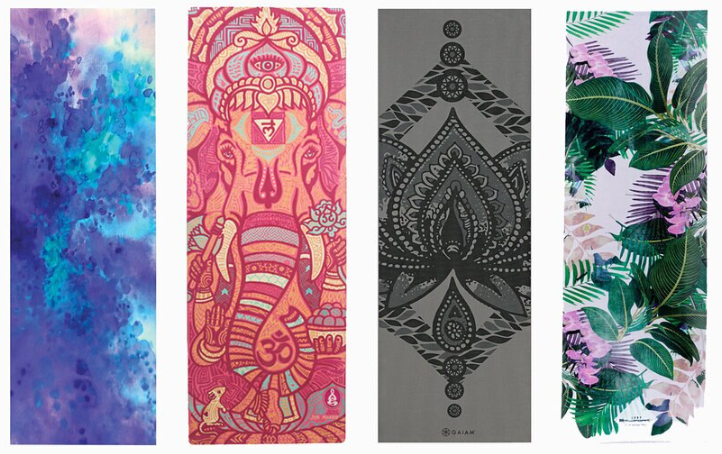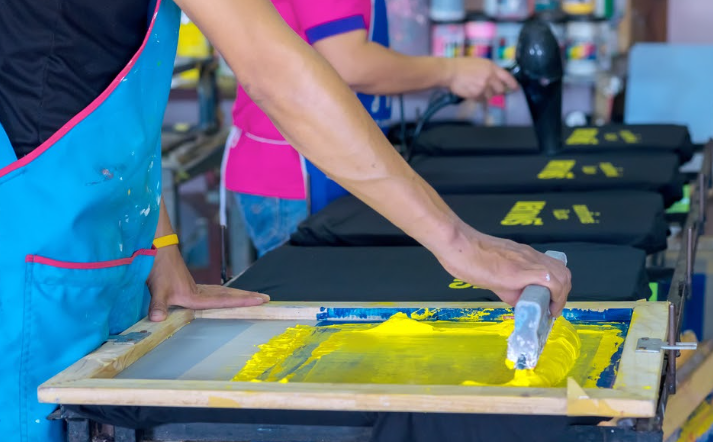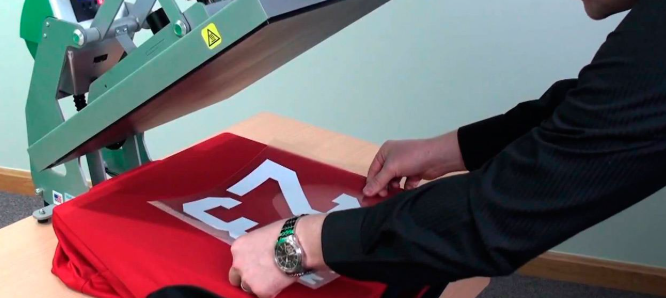I’ve often wondered why some printed yoga mats stay bright and last a long time. Others seem to fade or wear out quickly. In my experience, choosing the right material and print method is really important. This choice affects if you get a mat that looks great and performs well. You have options like TPE, which is better for the environment, or bold PVC. I understand these choices can sometimes feel a bit confusing. But I’ve noticed there’s one key thing people often miss. This simple detail truly makes or breaks how good your custom yoga mat will be.

Choose Your Base Material
I believe choosing the right base material is crucial for a high-quality printed yoga mat. The material you pick impacts the mat’s performance and the print’s clarity and vibrancy.
TPE (Thermoplastic Elastomer)
I like TPE because it’s kind to the planet and feels soft. It also accepts prints very well. For these reasons, I see many designers choose it when they want an earth-friendly material that also allows for good customization.
PVC (Polyvinyl Chloride)
I find PVC mats are tough and don’t cost a lot. You can use bright printing methods on them. This means you get designs that pop and can handle regular use.
Natural Rubber
Natural rubber mats are safe (non-toxic) and offer great grip. I recommend pairing them with microfiber for printing. This improves how the mat looks and works.
Cork
Cork mats have a great advantage: the material itself is anti-microbial. I’ve found that laser engraving or screen printing are common methods for cork. This gives the mat a unique and rustic appearance.
Suede
For suede, I often see TPE and microfiber-suede surfaces used for full-color prints. I believe this mix achieves high-quality results that yoga fans appreciate.
I suggest picking the right base material for your printed yoga mat. This will make it more useful and look better, meeting different customer tastes.
Select the Surface Type
Choosing the right surface type is important for how well your printed yoga mat works. The surface affects how it looks. It also changes how it performs when you do yoga.
Smooth Surfaces
- Suede: I think Suede is a great choice for full-color prints. It feels soft. It also allows for bright, detailed designs that I see many yoga enthusiasts appreciate.
- Microfiber: If you pair microfiber with TPE, I’ve found these surfaces show a lot of detail in printing. This makes the mat look better and improves how users feel about it.
- PVC: PVC surfaces last a long time and are good value. They support bright, lively prints. I recommend them for bold designs that get noticed.
Textured Surfaces
- TPE (Thermoplastic Elastomer): TPE is a greener choice and feels soft. From my experience, its texture might not give you the same print clearness as smoother surfaces.
- Cork: Cork has a country look and is anti-microbial by its nature. I’ve noticed its texture can make images less sharp. This is especially true with printing methods like laser engraving or screen printing.
- Natural Rubber: This material gives a great grip. When you combine it with microfiber, I believe it creates a good balance. This improves the design quality and how well the mat works.
To sum up, the surface type you choose has a big impact on how your printed yoga mat looks and how useful it is. Picking the right surface means your designs will look good. They will also work well when you practice.
Choose Your Printing Method
I recommend you choose the right printing method. This ensures your yoga mat designs are bright and last long. Some methods work better with certain materials. Others are better for detailed designs.
Screen Printing
Screen printing is ideal for simple logos or designs with 1 to 3 colors. It’s a popular choice for PVC, TPE, and cork mats. Due to its low cost per unit in large batches, this method is widely favored by manufacturers for bulk production. It offers high color stability and durability under repeated use. However, it’s not recommended for photo-quality images or complex gradients.

Heat Transfer Printing
This method uses heat and pressure to transfer a pre-printed film onto the mat. It’s highly recommended for detailed patterns or full-color artwork. Heat transfer works especially well on microfiber and suede surfaces, offering clean, vibrant results. It allows for a soft-touch feel and maintains the mat’s flexibility. Keep in mind, though, that it may not be as abrasion-resistant as other methods under heavy usage.

Digital Sublimation
Sublimation printing converts ink into gas, which then bonds with the mat’s fibers. This technique is best suited for polyester-blend microfiber mats. It delivers rich, long-lasting color and is perfect for full-surface designs. This method ensures that the design won’t crack, peel, or fade easily, even after frequent cleaning or rolling. However, it only works on synthetic fabrics, not on TPE or rubber.、

UV Printing
UV printing is a direct-to-mat digital process that cures the ink with UV light. It’s effective on smooth PVC and TPE mats, allowing for sharp, high-resolution images. It’s particularly efficient for small to medium-sized orders that require detailed graphics. It supports on-demand customization with minimal setup time, making it perfect for short-run promotional mats. But keep in mind, the printed area can feel slightly raised or textured.

Printing & Quality Control
Before moving into mass production, it’s essential to start with test prints to confirm that the artwork is accurately positioned, properly scaled, and that the colors match your original design. This step helps prevent costly errors and ensures your branding appears exactly as intended.
Next, conduct a thorough durability assessment. Roll and stretch the printed yoga mat multiple times to simulate real-life use. This helps you check whether the ink cracks, peels, or fades—issues that could compromise both the look and longevity of your product.
You should also test the print’s performance under moisture and friction, especially if the mat will be used in hot yoga or high-sweat environments. Poor-quality prints may smudge or lose color over time, which can reflect poorly on your brand.
To maintain consistent standards, it’s wise to implement a clear quality control checklist. This might include visual inspections, adhesion tests, and random batch sampling. A well-managed QC process ensures each mat not only looks great but performs reliably throughout its lifecycle.
Expert Opinion:
“Based on my 15 years making yoga gear, I’ve learned quality control is more than just ticking boxes. For me, it means understanding how each part performs in real-life situations. I strongly recommend durability tests. These tests are vital because yoga users put their mats through a lot. I’ve seen many beautiful designs fail. This happens because manufacturers skipped important stress testing. When I advise clients, I stress that a full quality check must include testing the mat in different temperatures and with varying moisture. These conditions largely determine how long prints last and the material’s overall sturdiness.“
————Sarah Chen. I am a Senior Manufacturing Engineer at Premium Yoga Equipment Solutions. For over 15 years, my work has focused on yoga mat production and ensuring their quality.
Final Processing
In my experience, good final processing is key. It makes sure your custom printed yoga mats look good and work well. I find this stage has a few steps. These steps make them last longer and sell better.
Embossing Options
If you want to, I think embossing adds an extra touch of quality. This technique adds a feel that many yoga users like. I’ve seen it make the mats more attractive.
Packaging
I recommend you roll and pack each mat carefully. You can use wraps, straps, or custom boxes for branding. I think these are good options. From my perspective, good packaging does two important things. First, it protects the mats. Second, it shows off your brand’s identity.
Labeling and Inserts
For your business-to-business shipments, I’d include clear labels. Also, add helpful inserts. This way, your customers will understand the product features. They will also know how to care for them. I find this makes their experience much better.
Based on my experience, following these final steps will help you make top-quality printed yoga mats. Your mats will really stand out in the market.
Optional Add-ons
I suggest thinking about these optional add-ons. They can make your custom printed yoga mats better and bring in more customers.
Custom Packaging (Box, Sleeve, Carry Strap)
I find that custom packaging is a great way to make your product more appealing. You can use boxes, sleeves, or carry straps for your brand. This packaging protects the mats. It also gives yoga
lovers a special unboxing moment.
Private Label Branding (Logos on Mat and Packaging)
Adding your private label. This means you can put your logo on the mat and its packaging. From my experience, this personal touch helps customers remember your brand and stay loyal. Your products will look better to people who want quality and a clear brand identity.
Eco-Certifications (REACH, SGS, OEKO-TEX)
I recommend getting eco-certifications like REACH, SGS, and OEKO-TEX. These make your yoga mats more trustworthy. These labels tell customers the materials are safe and good for the environment. I’ve seen this become very important for customers who care about the planet. It can be a strong selling point for you.
Summary
Creating a custom printed yoga mat is more than just applying a design—it’s a detailed process that combines the right materials, printing techniques, and strict quality control. From selecting a suitable surface to ensuring the print holds up under real-world use, every step matters in delivering a product that reflects your brand’s standards. Whether you’re launching a new yoga line or customizing mats for a studio, investing time in the right production workflow will help you stand out in a competitive market. For businesses, a reliable supplier and a clear QC process are key to long-term success.


